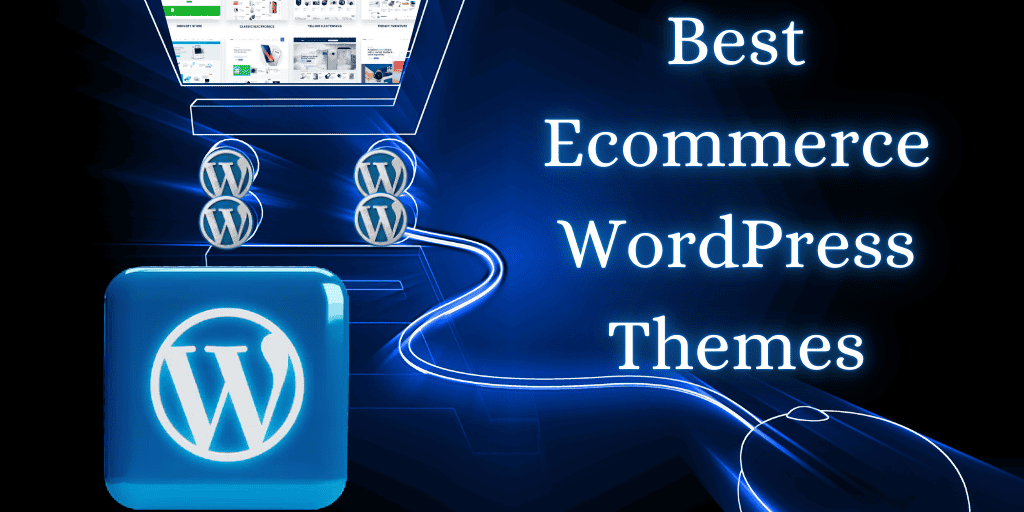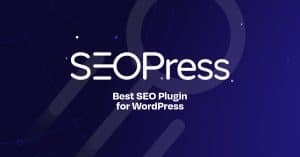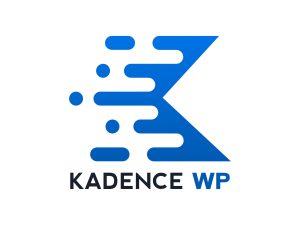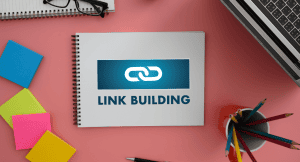Introduction
Brief Overview of eCommerce WordPress Themes
In the world of online retail, the right eCommerce WordPress theme can make or break your business. A well-chosen theme not only enhances the visual appeal of your website but also plays a crucial role in delivering a seamless user experience. With the rapid growth of online shopping, ensuring that your site is both attractive and functional is paramount. WordPress, with its vast array of themes, offers a versatile platform for creating eCommerce sites that cater to various business needs.
Choosing the right theme can be overwhelming, given the plethora of options available. Whether you're a small business owner looking to set up a basic online store or a large enterprise requiring advanced features, there is a WordPress theme tailored to your needs. This guide will walk you through the essential features to look for in an eCommerce theme and provide a comparative analysis of some of the best free and paid options available.
Purpose of the Guide
The primary aim of this guide is to help you make an informed decision when selecting an eCommerce WordPress theme. By comparing the features and functionalities of both free and paid themes, we aim to provide a comprehensive resource that addresses the diverse needs of online businesses.
We'll delve into the key features that make a theme suitable for eCommerce, such as design and customization options, eCommerce functionality, performance, SEO optimization, support, and integration capabilities. Following this, we'll explore some of the top free and paid eCommerce themes, highlighting their strengths and potential drawbacks.
Finally, we'll offer an in-depth comparison between free and paid themes to help you understand the value proposition of each category. Whether you are on a tight budget or looking to invest in a premium solution, this guide will equip you with the knowledge to choose the best theme for your online store.
By the end of this guide, you will have a clear understanding of what to look for in an eCommerce WordPress theme and how to choose the one that best fits your business needs, ensuring a robust and engaging online shopping experience for your customers.
Section 1: Key Features to Look for in eCommerce WordPress Themes
Selecting the perfect eCommerce WordPress theme involves more than just choosing a visually appealing design. There are several key features that you should prioritize to ensure your online store operates smoothly and effectively. Here, we break down the essential features to consider:
1. Design and Customization Options
Responsive Design
In today's mobile-driven world, a responsive design is crucial. Your theme should automatically adjust to different screen sizes, providing a seamless user experience on desktops, tablets, and smartphones. This not only improves user satisfaction but also positively impacts your site's search engine ranking.
Customizable Layouts
Flexibility in design is important to match your brand’s identity. Look for themes that offer customizable layouts, allowing you to rearrange elements, change colors, fonts, and backgrounds without requiring advanced coding skills. Many themes come with a drag-and-drop builder to make customization easier.
Visual Appeal
An aesthetically pleasing design attracts customers and encourages them to explore your site. Choose themes that offer modern, clean, and professional design options, with high-quality imagery and attention to detail in typography and spacing.
2. eCommerce Functionality
WooCommerce Compatibility
WooCommerce is the leading eCommerce plugin for WordPress, providing extensive functionality for online stores. Ensure that the theme you choose is fully compatible with WooCommerce, enabling you to leverage its powerful features for managing products, payments, and shipping.
Product Display Options
Effective product presentation can significantly influence purchasing decisions. Look for themes that offer various product display options, such as grid and list views, product carousels, and zoom-in features on product images. Additional features like quick view, wishlist, and comparison tools can enhance the shopping experience.
Shopping Cart Features
A smooth checkout process is essential to reduce cart abandonment rates. Themes should support a streamlined, user-friendly shopping cart and checkout process, with features like mini carts, one-page checkout, and multiple payment gateway integrations.
3. Performance and Speed
Lightweight and Fast-Loading
Performance impacts both user experience and SEO rankings. Choose a theme that is lightweight and optimized for speed. Avoid themes with bloated code and excessive features that can slow down your site.
Optimized Code
Themes with clean, well-structured code ensure better performance and compatibility with other plugins. Look for themes developed by reputable authors who follow WordPress coding standards.
4. SEO Optimization
SEO-Friendly Design
An SEO-friendly theme helps improve your site's visibility in search engine results. Features such as proper HTML tagging, fast loading times, and mobile responsiveness all contribute to better SEO performance.
Integration with SEO Plugins
Ensure that your theme integrates seamlessly with popular SEO plugins like Yoast SEO or All in One SEO Pack. These plugins provide additional tools to optimize your content and improve your search engine rankings.
5. Support and Updates
Regular Updates
Themes that receive regular updates are more secure and compatible with the latest versions of WordPress and WooCommerce. Check the update history of a theme to ensure it is actively maintained.
Customer Support Options
Reliable customer support is crucial, especially if you encounter issues with your theme. Look for themes that offer robust support options, including detailed documentation, forums, email support, or live chat.
6. Integration Capabilities
Payment Gateways
Ensure your theme supports integration with various payment gateways, providing customers with multiple payment options. This flexibility can enhance user satisfaction and reduce cart abandonment.
Third-Party Plugins and Tools
Your eCommerce site may require additional functionalities, such as marketing automation, analytics, or customer relationship management (CRM). Choose a theme that integrates smoothly with third-party plugins and tools to expand your site’s capabilities.
Section 2: Top Free eCommerce WordPress Themes
Choosing a free eCommerce WordPress theme can be an excellent starting point for new businesses or those with a limited budget. Despite being free, many of these themes offer robust features and high-quality designs. Here are some of the top free eCommerce WordPress themes available:
Theme 1: Storefront
Overview
Storefront is the official WooCommerce theme developed by Automattic, the creators of WordPress. It’s a simple yet flexible theme designed specifically for WooCommerce, ensuring seamless integration and compatibility.
Key Features
- WooCommerce Integration: Built to work perfectly with WooCommerce and its extensions.
- Responsive Design: Fully responsive and mobile-friendly layout.
- Customization Options: Offers multiple layout and color options to customize your store.
- Accessibility Ready: Ensures your site is accessible to all users.
Pros and Cons
- Pros: Reliable and stable, extensive WooCommerce compatibility, and regular updates.
- Cons: Basic design may require additional customization for a unique look.
Theme 2: Astra
Overview
Astra is a popular lightweight theme known for its speed and flexibility. It offers pre-built eCommerce templates and extensive customization options, making it suitable for various online stores.
Key Features
- Lightweight and Fast: Optimized for performance with minimal loading times.
- Pre-Built Templates: Includes eCommerce-specific templates that can be imported with one click.
- Customizable: Supports drag-and-drop builders like Elementor and Beaver Builder for easy customization.
- WooCommerce Ready: Seamless integration with WooCommerce for enhanced functionality.
Pros and Cons
- Pros: High performance, easy to customize, and a large community of users and developers.
- Cons: Some advanced features require the premium version.
Theme 3: OceanWP
Overview
OceanWP is a versatile theme that provides deep integration with WooCommerce and a wide range of customization options. It is known for its fast loading times and responsive design.
Key Features
- eCommerce Integration: Optimized for WooCommerce with features like quick view, floating add-to-cart bar, and product grid settings.
- Fast and Lightweight: Designed for speed and performance.
- Customization Options: Extensive options available through the WordPress Customizer.
- SEO Friendly: Built with SEO best practices in mind.
Pros and Cons
- Pros: Highly customizable, excellent WooCommerce support, and fast performance.
- Cons: Some extensions and advanced features are paid.
Theme 4: Hestia
Overview
Hestia is a modern one-page theme with a stylish design suitable for eCommerce sites. It offers seamless WooCommerce integration and is optimized for speed and performance.
Key Features
- One-Page Design: Modern and clean one-page design suitable for small to medium-sized stores.
- WooCommerce Ready: Full compatibility with WooCommerce for smooth operation.
- Customizable: Live Customizer and compatibility with page builders like Elementor.
- SEO Optimized: Built with SEO best practices for better search engine rankings.
Pros and Cons
- Pros: Modern design, easy to set up, and fast loading times.
- Cons: Limited layout options in the free version.
Theme 5: Neve
Overview
Neve is a fast, lightweight, and highly customizable theme perfect for eCommerce websites. It offers a clean design and a variety of starter sites to help you get started quickly.
Key Features
- Speed Optimized: Lightweight design ensures fast loading times.
- Starter Sites: Pre-built eCommerce starter sites available for quick setup.
- WooCommerce Integration: Seamless WooCommerce compatibility with additional features.
- Customizable: Supports popular page builders and includes customization options through the Customizer.
Pros and Cons
- Pros: Easy to use, fast performance, and versatile design options.
- Cons: Some features and customization options are locked behind the premium version.
Section 3: Top Paid eCommerce WordPress Themes
Investing in a paid eCommerce WordPress theme can offer enhanced features, advanced customization options, and dedicated support, making it a worthwhile investment for many online businesses. Here are some of the top paid eCommerce WordPress themes:
Theme 1: Flatsome
Overview
Flatsome is a highly popular and versatile eCommerce theme designed specifically for WooCommerce. It is known for its modern design, extensive customization options, and powerful page builder.
Key Features
- UX Builder: Built-in drag-and-drop page builder with live preview.
- Responsive Design: Fully responsive and optimized for all devices.
- WooCommerce Integration: Advanced WooCommerce features like quick view, wishlist, and catalog mode.
- High Performance: Optimized for fast loading times and performance.
Pros and Cons
- Pros: Extensive customization options, powerful page builder, and regular updates.
- Cons: Can be complex for beginners due to the multitude of options.
Theme 2: Divi
Overview
Divi by Elegant Themes is one of the most popular WordPress themes, known for its powerful Divi Builder. It offers unmatched flexibility and a wide range of design options, making it suitable for any type of eCommerce store.
Key Features
- Divi Builder: Drag-and-drop builder with a wide range of modules and templates.
- Responsive Design: Mobile-friendly design with customization options.
- WooCommerce Modules: Custom WooCommerce modules to enhance product pages.
- Design Flexibility: Extensive design options and advanced CSS control.
Pros and Cons
- Pros: Highly flexible, easy to use, and excellent customer support.
- Cons: Can be resource-heavy, impacting site speed if not optimized.
Theme 3: Shopkeeper
Overview
Shopkeeper is a premium eCommerce theme designed with flexibility and user-friendliness in mind. It offers a sleek and modern design, with powerful eCommerce features to enhance your online store.
Key Features
- One-Click Demo Import: Easy setup with pre-built demos.
- Customizable Layouts: Flexible layout options with a drag-and-drop builder.
- WooCommerce Integration: Advanced WooCommerce features like product zoom, size guide, and lightbox.
- Responsive and Retina Ready: Optimized for all devices and high-resolution screens.
Pros and Cons
- Pros: User-friendly, beautiful design, and comprehensive documentation.
- Cons: Slightly limited customization options compared to some other premium themes.
Theme 4: XStore
Overview
XStore is a highly customizable and feature-rich eCommerce theme. It comes with numerous pre-built demos, making it easy to set up a professional online store quickly.
Key Features
- 70+ Pre-Built Demos: A wide range of demo sites for various types of stores.
- Elementor and WPBakery: Compatibility with popular page builders for easy customization.
- Advanced eCommerce Features: Features like AJAX product filters, quick view, and multi-step checkout.
- Responsive Design: Fully responsive and optimized for mobile devices.
Pros and Cons
- Pros: Extensive demo options, powerful eCommerce features, and good support.
- Cons: Can be overwhelming due to the number of features and options.
Theme 5: WoodMart
Overview
WoodMart is a premium WooCommerce theme with a focus on performance and user experience. It offers a vast array of customization options and advanced eCommerce features.
Key Features
- Visual Composer: Drag-and-drop page builder for easy customization.
- Theme Options Panel: Comprehensive theme options for detailed customization.
- eCommerce Features: Advanced features like product variations, wishlist, and AJAX search.
- Optimized for Speed: Built with performance in mind for fast loading times.
Pros and Cons
- Pros: High performance, extensive customization options, and excellent eCommerce features.
- Cons: May require a learning curve for beginners due to the multitude of features.
Section 4: In-Depth Comparison of Free vs Paid eCommerce WordPress Themes
Choosing between free and paid eCommerce WordPress themes can be challenging, especially when considering the various features, performance, and overall value each type offers. Here’s a detailed comparison to help you make an informed decision:
1. Design and Customization
Free Themes
- Basic Design Options: Free themes often come with limited design and layout options. While they provide a good starting point, customization might be restricted to basic color changes and simple layout adjustments.
- Limited Templates: Most free themes offer fewer pre-built templates, which might require more effort to create a unique look.
- Customization Tools: Some free themes support basic customization through the WordPress Customizer, but they might not include advanced drag-and-drop builders.
Paid Themes
- Advanced Design Flexibility: Paid themes typically offer extensive customization options, including multiple pre-built templates, advanced typography settings, and customizable headers and footers.
- Premium Page Builders: Many paid themes come with premium drag-and-drop page builders like WPBakery, Elementor, or Divi Builder, allowing for more detailed and flexible design customization.
- Unique Layouts and Styles: With paid themes, you get access to a variety of unique layouts and styles that can be tailored to match your brand’s identity.
2. eCommerce Functionality
Free Themes
- Basic eCommerce Features: Free themes generally support basic WooCommerce functionality, such as product listings, shopping cart, and checkout processes.
- Limited Advanced Features: Features like product zoom, quick view, and wishlist are often not available or require additional plugins.
Paid Themes
- Comprehensive eCommerce Solutions: Paid themes offer a wide range of advanced eCommerce features, including AJAX product filters, advanced product variations, multi-step checkout, and more.
- Enhanced User Experience: Features such as product quick view, wishlist, and advanced search options are usually built into the theme, providing a better shopping experience.
3. Performance and Speed
Free Themes
- Lightweight and Simple: Free themes are often designed to be lightweight, which can result in fast loading times if they are not overloaded with plugins.
- Potential for Optimization Issues: Some free themes may not be as optimized for performance, leading to slower load times when additional plugins are installed.
Paid Themes
- Optimized for Speed: Many paid themes are designed with performance in mind, offering optimized code and faster loading times.
- Integrated Performance Tools: Paid themes might include built-in performance optimization tools or be compatible with third-party performance plugins to enhance speed.
4. Support and Updates
Free Themes
- Community Support: Free themes usually rely on community support through forums and documentation. The quality and responsiveness of support can vary.
- Infrequent Updates: Updates may be less frequent, potentially leading to compatibility issues with the latest versions of WordPress and WooCommerce.
Paid Themes
- Dedicated Support: Paid themes often come with dedicated support from the theme developers, including email support, live chat, and comprehensive documentation.
- Regular Updates: Paid themes are regularly updated to ensure compatibility with the latest versions of WordPress and WooCommerce, as well as to provide new features and security improvements.
5. Overall Value
Free Themes
- Cost-Effective: Free themes are ideal for businesses with limited budgets, offering essential eCommerce functionality without upfront costs.
- Basic Features: While cost-effective, free themes may lack advanced features and customization options, potentially requiring additional plugins or custom development.
Paid Themes
- Feature-Rich: Paid themes provide a wealth of features and customization options that can significantly enhance the functionality and appearance of your eCommerce site.
- Long-Term Investment: Investing in a paid theme can be worthwhile for businesses looking for a robust, scalable solution with dedicated support and regular updates.
Section 5: Choosing the Right Theme for Your eCommerce Site
Selecting the right eCommerce WordPress theme depends on various factors, including your business needs, budget, and long-term goals. Here’s how to choose the best theme for your online store:
1. Assessing Your Needs
Business Size and Scale
Consider the size of your business and the volume of products you plan to sell. Smaller businesses might find free themes sufficient, while larger enterprises may benefit from the advanced features of paid themes. Evaluate how many products you have, the complexity of your inventory, and the anticipated growth of your business.
Specific Requirements
Identify any specific features or functionalities you need. This could include product variations, multiple payment gateways, multilingual support, advanced product filtering, customer reviews, or integration with third-party tools. Make a list of non-negotiable features and look for themes that meet these requirements.
2. Budget Considerations
Free vs. Paid
Determine your budget for the theme. Free themes are great for starting out, but investing in a paid theme can offer greater flexibility and advanced features. Assess whether you can afford a one-time payment or a subscription model that some premium themes require.
Cost-Benefit Analysis
Evaluate the long-term value of a paid theme, considering the cost of additional plugins and potential customization needed with a free theme. Sometimes, the cumulative cost of adding features to a free theme can surpass the price of a paid theme that already includes these features.
3. Future Growth and Scalability
Planning for Expansion
Choose a theme that can grow with your business. Paid themes often offer scalability with advanced features and integrations that support expansion. Consider the theme’s ability to handle increased traffic, additional product categories, and more complex site structures as your business expands.
Update and Support Needs
Consider the importance of regular updates and support for maintaining a secure and functional site. Paid themes typically offer ongoing updates and dedicated support, which can be crucial for resolving issues quickly and keeping your site running smoothly.
4. Final Recommendations
Start with a Free Theme
If you’re new to eCommerce or have a limited budget, starting with a free theme can be a good option. Test its features and functionality before considering an upgrade. Free themes like Storefront, Astra, and OceanWP provide a solid foundation for small to medium-sized stores.
Invest in a Paid Theme
For businesses with specific needs or plans for growth, investing in a paid theme can provide a more robust solution with advanced features, better performance, and dedicated support. Themes like Flatsome, Divi, and Shopkeeper offer extensive customization options and advanced eCommerce functionalities.
Conclusion
Summary of Key Points
Choosing the right eCommerce WordPress theme is a critical decision that can impact your site's success. By considering factors such as design, customization options, eCommerce functionality, performance, and support, you can select a theme that aligns with your business needs and goals.
Final Thoughts on Selecting the Best eCommerce WordPress Theme
Whether you opt for a free or paid theme, the key is to ensure it offers the essential features required for a seamless and enjoyable shopping experience. Free themes are great for getting started, while paid themes offer advanced capabilities and flexibility for growing businesses.







